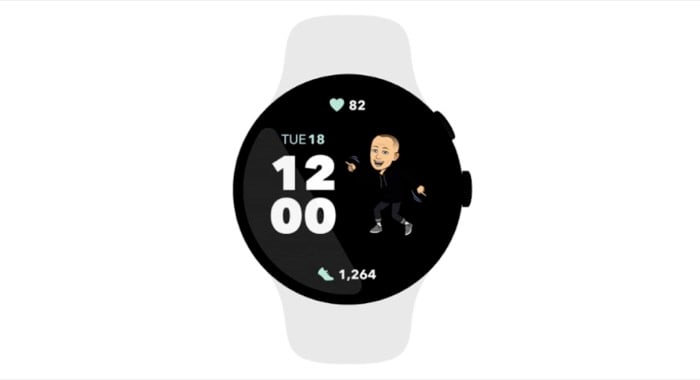Despite Qualcomm announcing the updated Wear 3100 SoC, the poor optimization of Wear OS from Google meant that the same old issues plagued watches even with the newer chip. Sluggish UI and barely a day’s worth of battery life just did not make the cut if one had to spend over $300 for a smartwatch. Just as consumers started to lose all hope for an ideal Wear OS smartwatch that could give the Apple Watch a run for its money, Google announced a radical shift in direction for Wear OS at the I/O 2021. They’ve partnered with Samsung to bring about some much-needed changes to revive Wear OS which we’ll take a look at now.
Wear OS: New Features and Changes
Google says that it has made changes to Wear OS keeping you, the user in mind. Visual changes seem to be the key takeaway with Google’s software this year as they seem to have made big changes to UI elements on Android 12 too. While we don’t really have an official overview of what the new version of Wear OS is going to look like, Google has shared a few images that point towards a cleaner, more minimalistic UI. A lot of changes though have happened under the hood.
1. Unified platform with Tizen
As we mentioned earlier, Wear OS was riddled with performance issues and bugs but had the right set of features that made a smartwatch, well, smart. The Google Play Store was limited to Wear OS, and all of Google services like the Google Assistant and stock Google apps were the highlight of Wear OS. Tizen, Samsung’s proprietary OS on the other hand managed to extract maximum performance from the hardware present on the Galaxy Watches and provided a smooth experience, something that Wear OS failed to do.
What Google has done by partnering with Samsung is bring the best of both worlds to the end-user. You can expect smartwatches with the new version of Wear OS to perform up to 30% faster without having the constraints of Tizen like limited apps and support for Google services. All this while still managing to provide good battery life. Google claims to have optimized lower layers of the OS and is also claiming to allow manufacturers to add their own UI on top of Wear OS, something that was not allowed till now.
2. A much-needed UI overhaul
Google has taken a more modern route with their UI on Android 12 and the same seems to follow even on the new version of Wear OS. While we don’t have a lot of images yet, the few that Google has provided point towards a minimalistic and clean UI that prioritizes performance and ease of use while navigating through the UI. They have also implemented some shortcuts to access important features of the smartwatch from any screen or app and even the ability to switch between apps with ease.
The new UI is going to be tile-based which makes it easier and clutter-free for the user since a couple of swipes is all it will take to access the required menu or feature. Users will be able to customize their home screen carousel with tiles from Google itself along with ones from their favorite third-party apps like Calm, Sleep Cycle, and Flo. You can choose to keep just the amount of information you need on a regular basis on your home screen and tuck the rest away. Related Read: How to Setup and Use WhatsApp on WearOS Smartwatch
3. Better support for Google services and third-party apps
Google Assistant was one of the key features of Wear OS which allowed users to set reminders, search for queries, or just get things done with the help of the voice assistant for convenience. Now, Google seems to be working on an improved and redesigned version of the Google Assistant for Wear OS along with better support for Maps too. Google recently rolled out an updated version of Gboard for Wear OS, and they are reportedly working on Google Pay support on Wear OS for 26 new countries.
YouTube Music is also said to make its debut on Wear OS sometime soon and will allow users to stream music directly from their watch or even download music offline onto the watch. Not just Google’s apps, but the new version of Wear OS will allow developers to easily build new apps and tiles for smartwatches that can be downloaded directly from the Play Store. Tools like Tiles API which was a part of Tizen will allow developers to make newer watch faces.
4. Fitbit’s acquisition finally pays off!
Google announced the acquisition of Fitbit back in 2019 which was completed earlier this year. Fitbit was one of the market leaders in terms of fitness and activity tracking and the same algorithms that Fitbit used and users all over the world loved are now making their way onto the new version of Wear OS. Health and fitness tracking is a vital aspect of smartwatches and the experience of Fitbit will surely pay off in this regard.
The new updates to Wear OS will start rolling out during the latter half of 2021 and we should start seeing smartwatches with the new version of Wear OS from brands like Mobvoi, Fossil, Skagen, etc. In fact, new smartwatches from Samsung like the next Galaxy Watch will also come with Wear OS pre-loaded instead of Tizen which makes them more feature-rich and will also appeal to consumers who use non-Samsung smartphones.
We are surely thrilled to see what the new version of Wear OS brings to the table and how it compares to watchOS on the Apple Watch. Will we finally see Apple’s monopoly in the smartwatch market come to an end? Only time will tell. Watch. Time. The watch will tell the time. Get it? Alright, sorry.











![]()
